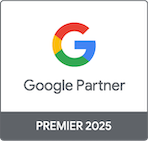Isn’t Google already protecting me from click fraud?
Table of Contents
Many advertisers assume that Google Ads fully protects them from click fraud. While Google does offer some basic safeguards, it only scratches the surface. ClickPatrol goes far beyond Google’s default protection to ensure your ad budget is truly safe.
What Google blocks by default
Google uses automated filters to identify and remove “invalid clicks,” such as accidental double-clicks or traffic from known data centers. However, many more sophisticated and damaging forms of click fraud still slip through.
These include:
- Botnets using residential IPs
- Human click farms
- Sophisticated competitors using proxy servers
- Traffic from suspicious referrers
What ClickPatrol adds on top
ClickPatrol is designed to detect and stop fraud that Google can’t reliably catch. Here’s how they compare:
| Feature | Google Ads | ClickPatrol |
|---|---|---|
| Blocks IPs in real time | ❌ | ✅ |
| Excludes VPN traffic | ❌ | ✅ |
| Deep fingerprinting | ❌ | ✅ |
| Bot request click blocks | ❌ | ✅ |
| Click-level AI detection | ❌ | ✅ |
| Suspicious referrer blocking | ❌ | ✅ |
Why you still need protection
Google is focused on protecting its ecosystem at scale. ClickPatrol is focused on you.
- ClickPatrol identifies fraud based on your specific traffic patterns.
- It gives you transparency and control over what’s being blocked.
- You see suspicious activity in real time and can act immediately.
In short, Google tries to keep the worst actors out, but ClickPatrol makes sure you’re not paying for the ones that still get through.
Want to see what Google misses?
Most ClickPatrol users are surprised by how much fake traffic gets past Google’s filters. Try it yourself and see how much of your budget can be saved.



